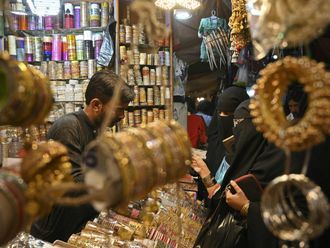Islamabad: The scorching heat accompanied by massive, unscheduled power outages, lasting from eight-18 hours, across Pakistan have made the lives of residents miserable.
With temperature touching 46 degrees Celsius in the southern parts of the country, Pakistan’s urban areas are facing load shedding of eight-10 hours whereas rural areas suffer 12-18 hours of outages. In some areas, power goes off after every hour, badly affecting daily life.
The residents of Islamabad and Rawalpindi are facing intense load shedding. The electricity breakdown also led to the worst shortage of water as people could not use electric motors.
This has triggered protests in different parts of the country. “We pay electricity bills regularly but [the] government is not providing us light when we needed it in summer season. How can we survive in this situation?” said an agitated citizen, Sajid Mehmoud. Some angry protesters demanded that the government should accept its failure in providing interrupted power supply in summer and gas in winters.
The government has confessed that they failed to curtail power outages ahead of the summer season, which has caused unprecedented load shedding.
During a meeting of the Cabinet Committee on Energy on April 18, when Prime Minister Nawaz Sharif inquired about the worsening situation, the ministry officials replied that searing temperatures resulted in increase in power’s demand while the required amount of water was not available in the dams, and that stalled power generation.
The electricity shortfall in April has exceeded a staggering 7,200 megawatts (MW) as power generation’s demand stood at 19,700MW while the supply was 12,500MW leading to extended load-shedding, making it worse for heat-stricken masses.
The hydro power production has minimised to 2000MW, according to National Power Control Centre. The government power houses are producing only 4000MW, while 3500MW is being attained from private power houses and 500MW from solar and other sources.
Experts, however, claim that the energy crisis is the cause of widespread mismanagement and nepotism.
In 2013, when the Pakistan Muslim League-Nawaz (PML-N) government came into power, the electricity shortfall in peak summer season used to exceed 7,000MW. The situation, some believe, is back to square one as the shortfall is exceeding 7,000MW mark currently and the peak summer season has not even arrived.
This April 2017 has turned out to be the hottest April in Lahore in the last two decades; maximum temperature on April 17 was 43.3C.
The predicted shortfall during June-July 2017 is 8000MW, with demand persevering at 22000MW. Meanwhile, Pakistan Meteorological Department predicted that temperatures may rise further this month.












